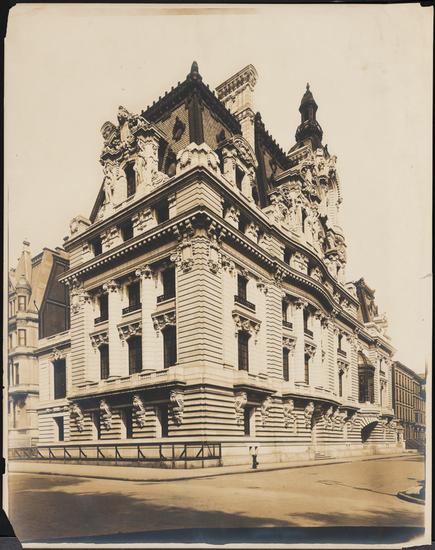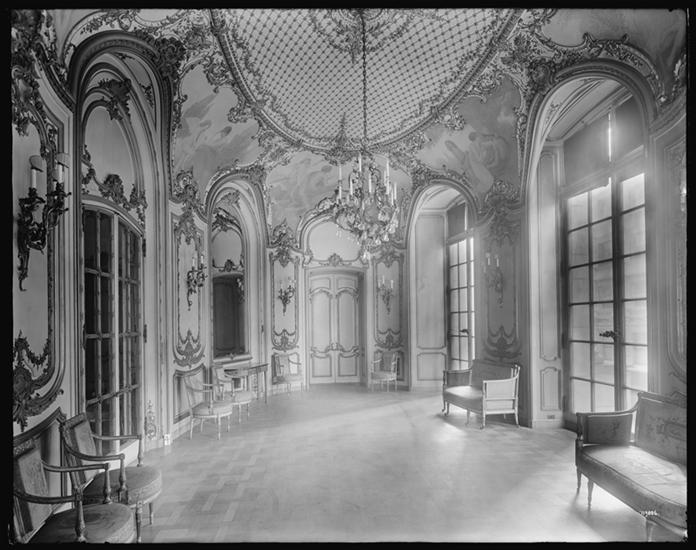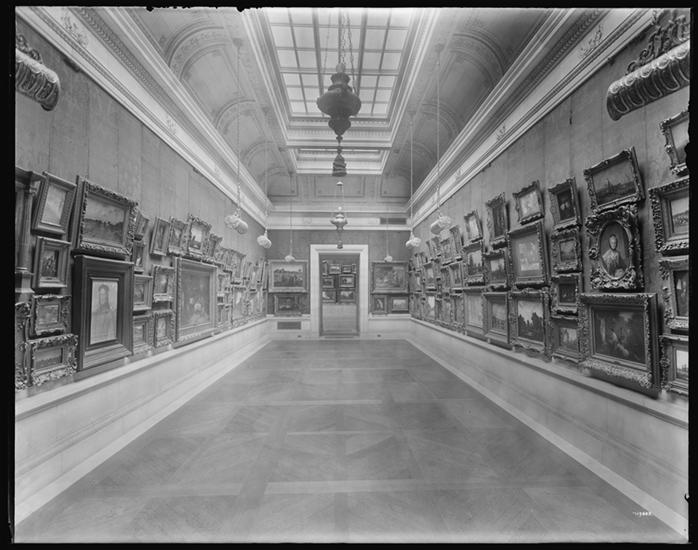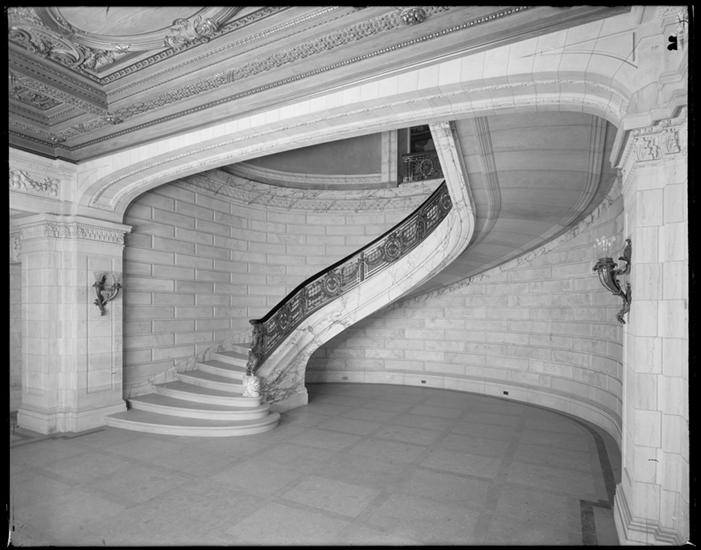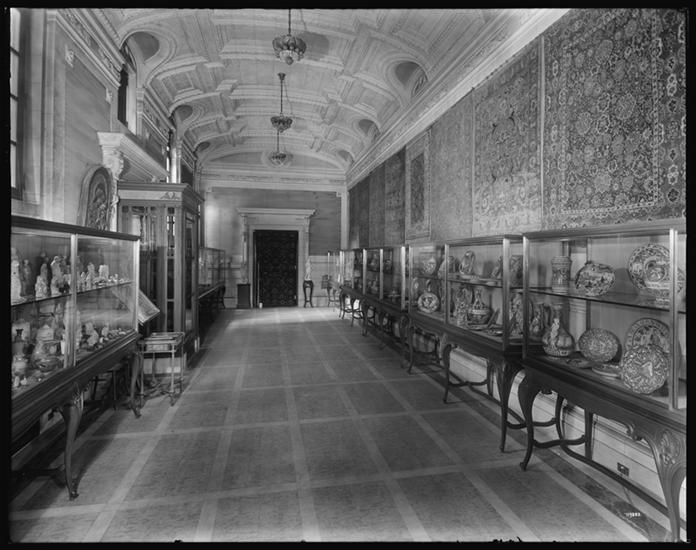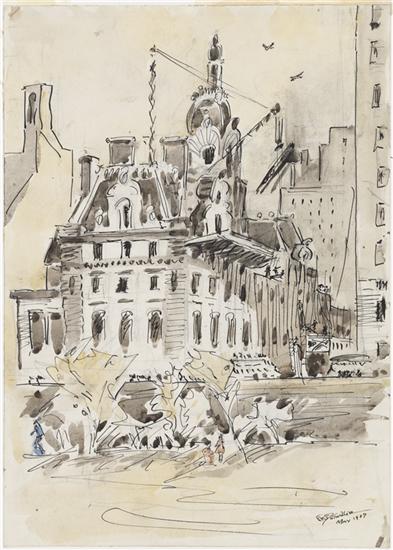William A. Clark Mansion
Tuesday, August 14, 2018 by
Visitors to the Museum’s current exhibition, Elegance in the Sky: The Architecture of Rosario Candela will have the opportunity to learn about 960 Fifth Avenue, at East 77th Street, one of the many apartment building designed by the architect during his career. As mentioned in the exhibition, The New York Times referred to 960 Fifth Avenue as “literally…12 mansions built one on top another.” While briefly noted in this short video, the exhibition doesn’t spend that much time talking about the actual mansion that once stood at 960 Fifth Avenue, the home of Montana Senator and copper magnate William S. Clark Sr.
Clark, who was originally born in Pennsylvania, moved out west with his family to study law, then eventually found his way to financial success in the Montana Gold Rush of the early 1860s. It was through copper that Clark truly made his fortune, though, and became known as one of the three “Copper Kings” of Butte Montana, along with Marcus Daly and F. Augustus Heinze. His 34-room mansion in Butte, Montana, still stands today as the “Copper King Bed and Breakfast.”
However, the 34-room home in Butte was clearly just a practice run for the mansion he commissioned in 1897 at 960 Fifth Avenue, here in New York. The house, which included 121 rooms, 31 baths, four art galleries, a swimming pool, concealed garage, and underground rail line to bring in heating coal was completed in 1911. Also known as “Clark’s Folly,” the home was considered among the more egregious examples of Gilded Age excess.
The original plans, drafted by the French architect Henri Deglane initially outlined a home that would cost approximately $415,000 to build. In 1901, Clark deemed these insufficient, especially in regards to the provisions for his art gallery. As he had contracted with the New York firm of Lord, Hewllet & Hull to execute the work, he engaged the partners to acquire additional land and revise the plans, bringing the new designs to $2,500,000. Upon completion, the house was estimated to have actually cost $6 million dollars to construct (over $150 million in 2018), with several lawsuits thrown in the mix along the way
In addition to the cost of the house, in support of the effort to build it, Clark also acquired a quarry in New Hampshire for $50,000, and built a railroad to transport the stone out of it; a bronze foundry in which to fabricate the fittings; and imported marble from Italy, oak from Sherwood Forrest in England, and parts of a Chateau from France for the interior.
Senator Clark’s New York mansion took 14 years to build, and a mere 14 years after completion, on March of 1925, Clark succumbed to pneumonia and died at age 86. Interestingly enough, Clark’s art collection, which prompted the aforementioned expansion of his home before it was even built, sparked yet another controversy. In his will, Clark left the majority of the collection, valued at nearly $3 million in 1925 (just under $44 million today), to the Metropolitan Museum of Art, “conditional on providing and maintenance of the museum of a well-lighted gallery or galleries for the exclusive occupancy of these works of art, to be designated the William A. Clark collection.” The Metropolitan Museum in turn declined the bequest, on the grounds that they did not feel they could commit to fulfilling the conditional terms in perpetuity. The Corcoran Gallery of Art in Washington, DC, was quick to step in and accept the collection, which they held until their dissolution in 2014, and then was subsumed by the National Gallery of Art.
The mansion went on the market not long after Clark’s death, as well, but few bidders stepped forward. The substance of the mansion – a hulking mass of marble and steel – was actually considered an encumbrance to potential buyers. In a time when more and more Gilded Ages mansions along upper Fifth Avenue, or “Millionaires’ Row,” were sold and demolished to make way for apartments, Clark’s mansion was deemed especially burdensome to dismantle and cart away. Finally, in February 1927, the property sold for under $3 million which was less than half that the cost of construction early in the 20th century. The majority of the selling price was attributed to the land itself. As noted earlier, this property was to become 960 Fifth Avenue, the 12 story luxury cooperative apartment house designed by Rosario Candela, which at the time was already advertising suites for sale up to $350,000 (over $5 million in 2018). Thus, the single mansion was demolished, and the many – or shall we say “mini” – mansions were built in its place.
View more images of Senator Clark’s Mansion and of 960 Fifth Avenue.
